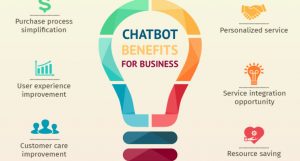Hi everyone, and welcome to today’s video on improving educational outcomes with AI chatbots. Over the last few years, we’ve seen an explosion in the use of artificial intelligence in education, and one area where AI is having a particularly significant impact is the development of chatbots. In this video, we’ll explore the research behind how chatbots can improve educational outcomes, and we’ll take a look at some of the most promising examples of chatbots in action.
HOW CHATBOTS IMPROVE EDUCATIONAL OUTCOMES
So, how exactly do chatbots improve educational outcomes? One of the key advantages of chatbots is their ability to provide personalized learning experiences for students. Unlike traditional classroom settings, where teachers often have to cater to the needs of an entire class, chatbots can adapt to individual students’ learning styles and paces. This means that students can receive the support they need, when they need it, without feeling embarrassed or left behind.
Another advantage of chatbots is their ability to provide immediate feedback. In a traditional classroom setting, students often have to wait for their work to be graded before they can receive feedback on their progress. With chatbots, however, students can receive immediate feedback on their answers, which allows them to identify and correct mistakes more quickly. This can help students stay motivated and engaged and can lead to improved learning outcomes overall.
Finally, chatbots can help students build important 21st-century skills such as critical thinking, problem-solving, and collaboration. By interacting with a chatbot, students can learn how to ask questions, analyze information, and work through complex problems. And because chatbots can be designed to simulate real-world scenarios, students can practice applying these skills in a safe and supportive environment.
PROMISING EXAMPLES OF CHATBOTS IN EDUCATION
Now that we’ve looked at how chatbots can improve educational outcomes, let’s take a closer look at some of the most promising examples of chatbots in action.
One example comes from Georgia State University. Where a chatbot called Pounce is helping students navigate the university’s vast array of resources. Pounce can answer questions about everything from financial aid to student clubs, and can even help students schedule appointments with advisors. Thanks to Pounce, Georgia State has seen a significant increase in student retention rates, as well as a decrease in the time it takes students to graduate.
Another example comes from Duolingo, the popular language learning app. Duolingo’s chatbot feature allows students to practice their language skills in a conversational setting and provides immediate feedback on their pronunciation and grammar. This feature has been particularly helpful for language learners who may not have access to native speakers or language tutors.
You can also provide an example of students using Papertyper. Essay writing is one of the most popular assignments in US colleges, so it’s no wonder that such tools are popular. Just imagine, such a bot can write a paper on the topic you need, all in just a few clicks. If you had told me this five years ago, I wouldn’t have believed it.
And finally, there’s Woebot, a chatbot designed to help students manage their mental health. Woebot uses cognitive-behavioral therapy techniques to help students identify and address negative thought patterns, and provides personalized feedback and support. Woebot has been shown to be as effective as human therapists. In some cases and has the potential to significantly improve access to mental health care for students.
CONCLUSION
So there you have it, a closer look at how chatbots are improving educational outcomes. And some of the most promising examples of chatbots in action. As AI technology continues to advance, we can expect to see even more innovative uses of chatbots in education. From personalized tutoring to real-time language translation. If you want to learn more about this topic, there are a few key takeaways to keep in mind.
First, chatbots have the potential to improve educational outcomes. It’s important to remember that they are not a replacement for human teachers. Chatbots can provide personalized support and feedback, but they cannot replace the guidance and expertise of a skilled educator.
Second, it’s important to consider the ethical implications of using chatbots in education. As with any technology, there is always the risk of bias or unintended consequences. It’s crucial to ensure that chatbots are designed and implemented in an ethical and responsible manner. With a focus on equity and inclusion.
Finally, it’s worth noting that chatbot are just one example. How AI technology can be used to improve education. Other applications include adaptive learning systems, intelligent tutoring systems, and even virtual reality simulations. As we continue to explore the potential of AI in education. It’s important to keep an open mind and remain focused on the ultimate goal: improving educational outcomes for all learners.
Thank you for joining me in this discussion on improving educational outcomes with AI chatbot. If you have any questions or comments, please feel free to leave them in the comments below. And as always, don’t forget to like and subscribe for more videos on the latest trends and topics in AI and technology!



